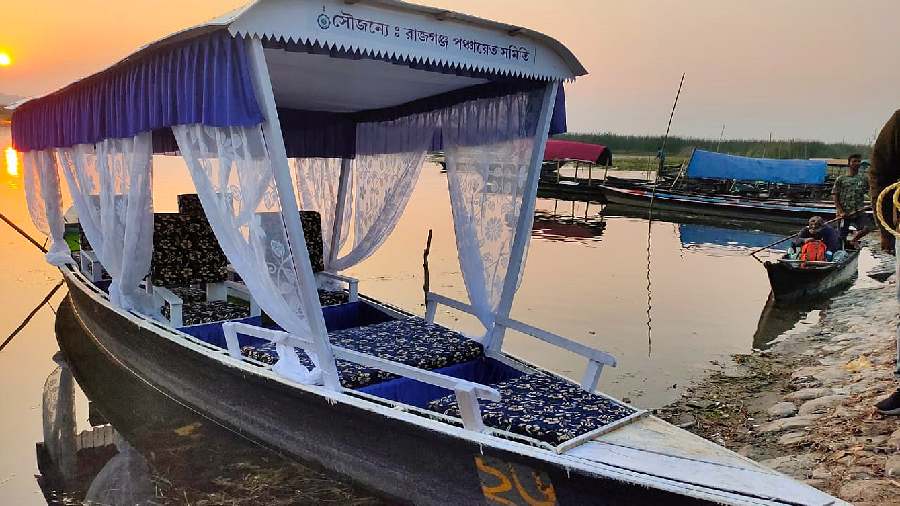The Gajoldoba Development Authority introduced two “shikaras” (decorated country boats) on the Teesta river in Bhorer Alo, the mega tourism hub that has been developed by the state government on the right bank of the river.
“Those visiting the tourism hub can enjoy shikara rides on the Teesta river. They can catch a glimpse of the Kanchenjungha, and the pristine forests and can click photos of hundreds of migratory birds amid the serenity of nature. We believe the ride will soon gain popularity at the site,” said Khageswar Roy, vice-chairman of the development authority.
A few years back, chief minister Mamata Banerjee had come up with the idea to develop Gajoldoba — which is around 25 kilometres from Siliguri — as a tourism hub. She had named the hub as Bhorer Alo and allocated funds for the infrastructural development of the site.
Over the years, the site has emerged as a popular location and hundreds of tourists are pouring in at Bhorer Alo to stay, enjoy nature and simultaneously engage in various entertainment activities.
The state tourism department as well as some private groups have come up with accommodations at the site.
The shikaras, sources said, will be run by Rajganj panchayat samiti.
Gajoldoba, which is in Jalpaiguri district, comes under Rajganj block.
In each of these decorated boats, six chairs and two mattresses have been put where people can sit and enjoy a ride.
“Around Rs 25,000 has been spent to make each of these shikaras. The Gajoldoba Naukabihar Cooperative Society will provide boatmen and will also collect the revenue,” said a source.
Initially, it has been decided that for a ride up to one and a half kilometres, a person has to shell out Rs 100. For a ride of two and a half kilometres the charge will be Rs 200 per person and Rs 300 will be charged if a person takes a three-kilometer-long ride.
Moumita Godara Basu, the district magistrate of Jalpaiguri, who was in Gajoldoba on Thursday, said life jackets have been provided to the boatmen who run country boats on the Teesta.
She mentioned that on a number of occasions, it has been found that boats are moving closer to the barrage from where water is released in a regular manner. “There is a risk to life if a boat falls within the turbulence at the time when water is discharged.
That is why the boatmen have been told not to sail within 500 metres of the barrage. If they violate it, fines would be imposed and also the boats might be confiscated,” said Basu.










